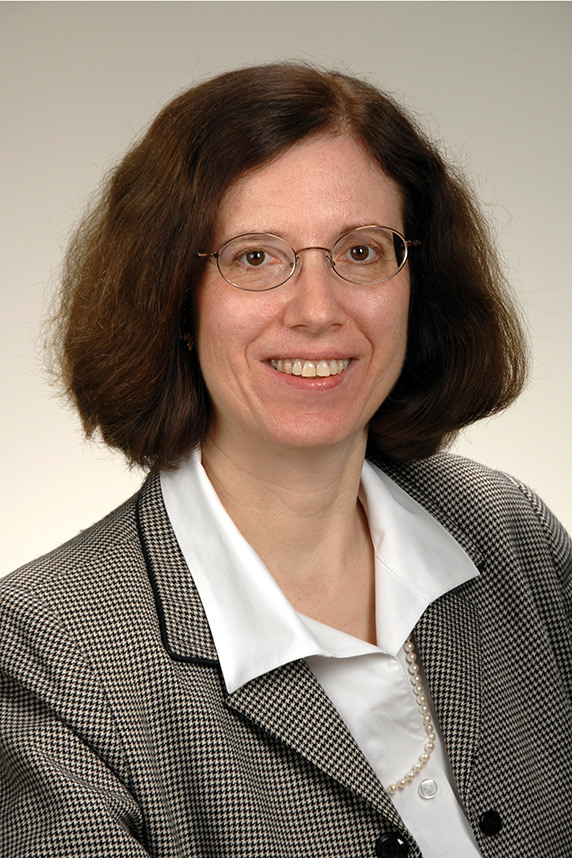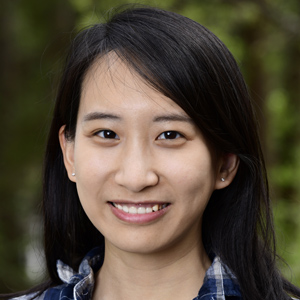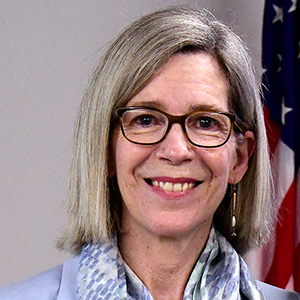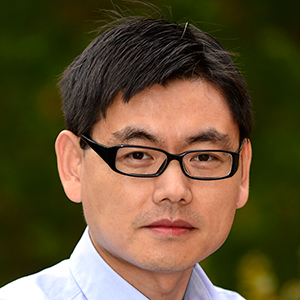Last month, Lisa Rider, M.D., was appointed Senior Clinician at NIEHS and Head of the institute’s Environmental Autoimmunity Group (EAG), following the April retirement of Fred Miller, M.D., Ph.D. Rider previously served as Deputy Head of EAG, a research team that aims to identify genetic and environmental risk factors for myositis and other autoimmune diseases. Founded by Miller, EAG was the first clinical research group at NIEHS.
Prior to joining EAG in 2001, Rider served as Medical Officer in the Division of Cellular and Gene Therapies in the Center for Biologics Evaluation and Research at the U.S. Food and Drug Administration (FDA). She then became Medical Officer and Staff Scientist in the FDA Division of Monoclonal Antibodies.
 Rider has published nearly 150 peer-reviewed manuscripts and 40 book chapters and reviews. She is the primary source of local expertise in pediatric myositis assessment and management and leads or co-leads multiple efforts by national and international consortia. (Photo courtesy of Bill Branson / National Institutes of Health)
Rider has published nearly 150 peer-reviewed manuscripts and 40 book chapters and reviews. She is the primary source of local expertise in pediatric myositis assessment and management and leads or co-leads multiple efforts by national and international consortia. (Photo courtesy of Bill Branson / National Institutes of Health)Rider’s work characterizing disease subtypes has been instrumental in the development of better disease assessment tools and treatment strategies for juvenile myositis. She earned the prestigious 2020 James T. Cassidy Award from the America Academy of Pediatrics, which recognizes outstanding achievement in pediatric rheumatology.
Environmental Factor recently met with Rider to learn about her work and unique career path.
EF: You went to medical school at Duke University, followed by a pediatrics residency and a pediatric rheumatology fellowship at the University of Washington Children’s Hospital and Medical Center in Seattle. How did you end up at NIEHS?
Rider: I come from a family of health professionals and scientifically minded people, so that was the original spark of interest. In my college years, I gave a lot of thought to whether I should go to medical school or get a Ph.D. in biochemistry. I was split between wanting to help patients directly and wanting to answer scientific questions.
Ultimately, I went to medical school at Duke, where I worked in a neutrophil [white blood cell] lab during my third year. My interest in that area led me to pursue a postdoctoral fellowship at the National Institutes of Health [NIH] after my residency, where I worked on molecular aspects of the immune system, specifically IgE receptor signaling as a model immune receptor system, with Henry Metzger, M.D., then Scientific Director of National Institute of Arthritis and Musculoskeletal and Skin Diseases [NIAMS].
I had developed an interest in pediatric rheumatology during my clinicaltraining, so it was just fortuitous that I ended up in a basic immunology lab at the arthritis institute. At that point, it came into focus that my interest had shifted away from basic research towards the translational side, understanding and advancing patient care directly.
EF: You are an internationally recognized expert in childhood myositis, a rare autoimmune disease involving chronic inflammation of the muscle that is often accompanied by symptoms affecting skin and other organs. How did your path lead there?
While in NIAMS, I was next door to Paul Plotz, who worked in myositis in adults and trained Fred Miller. We would discuss patients at rounds, and I started a project characterizing juvenile myositis in his lab, so the natural next step was to go work with Fred. I had seen patients with myositis during my fellowship that were quite inspirational, but my love for the work really started when Fred gave me two large projects to work on, one to characterize the phenotypes of juvenile myositis and the other to develop validated tools to assess disease activity in clinical trials, portions of which we are still working on today.
 Rider won the 2011 Physician Researcher of the Year Award from the Physicians Professional Advisory Committee to the Surgeon General of the U.S. Public Health Service. (Photo courtesy of Lisa Rider)
Rider won the 2011 Physician Researcher of the Year Award from the Physicians Professional Advisory Committee to the Surgeon General of the U.S. Public Health Service. (Photo courtesy of Lisa Rider)EF: Myositis affects 50,000 to 75,000 people in the United States. How have studies on myositis furthered our knowledge of autoimmunity in general?
Rider: Some of the work that we’ve done in myositis looks at grouping the patients more homogeneously based on certain disease-specific autoantibodies — this has been groundbreaking. The concept that myositis is not just one disease extends to other autoimmune conditions too, and although experts have been slow to recognize this, it is now at the core of risk assessment and therapeutic strategy development for other autoimmune conditions such as lupus, rheumatoid arthritis, and scleroderma, among other conditions.
EF: Throughout your career, you have leveraged an impressive number of intramural and extramural collaborations into a variety of translational projects. Those efforts have positioned EAG to continue to advance our understanding of autoimmune myositis syndromes. Can you talk about that experience?
Rider: People are very collaborative at NIEHS and across NIH. Meeting and working with so many different scientists from different areas of expertise and training levels, and who come from different regions of the country, or even different countries, is very unique. To have all those different perspectives really enriches our ability to look at things from different angles.
(Florencia Pascual, Ph.D., is a contractor in the NIEHS Pediatric Neuroendocrinology Group.)









